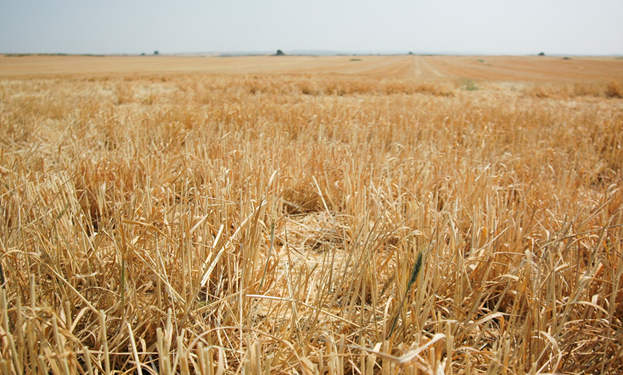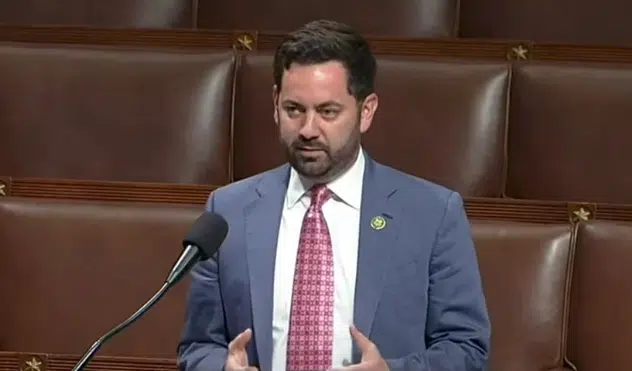258 million people were at increased risk for starvation in 2022, according to the United Nations’ (UN) “Global Report on Food Crises 2023,” up from 193 million in 2021, a 33.6 percent increase, as Russia’s invasion of Ukraine continues to disrupt global food production and distribution as prices skyrocketed.
According to UN report, because Russia and Ukraine had accounted for about 25 percent of global wheat exports, the disruption to global food supply chains at the Black Sea contributed to world starvation: “The war in Ukraine intensified the magnitude and severity of food crises by exacerbating food access issues at both the macro and household levels. At the start of 2022, many GRFC countries’/territories’ economies were under fiscal pressure and vulnerable to additional shocks, and were dragged further into a cycle of high prices, inflation, increasing debt burdens and currency depreciation with the onset of the war… Freight costs also rose dramatically with the lack of access to Black Sea ports, destruction of infrastructure, trade restrictions, increased insurance costs and higher fuel prices.”
In 2021, global wheat production was about 772 million tons, 75 million of that came from Russia and another 33 million tons came from Ukraine.
And although a deal to keep Black Sea ports open was recently renewed, those ports at Pivdennyi have not received any new ships since May 2, according to the UN. And even with the deal, such as it is, production is still way down in Ukraine and Russia thanks to the war.
As a result, net food importers in Africa and the Middle East from Russia and Ukraine suffered the most: “In 2022, 78 percent of the 42 countries/territories identified as major food crises in the GRFC 2023 were net food importers. Many, especially those in Africa and the Middle East, sourced staple foods from the Russian Federation and Ukraine in 2021, which further increased their exposure to the price fluctuations in global markets.”
Putting the report into context was Scientific American and E&E News’ Susannah Savage, noting that “catastrophic” conditions were already putting people at risk for famine: “Around 376,000 people in seven countries — Afghanistan, Burkina Faso, Haiti, Nigeria, Somalia, South Sudan and Yemen — face ‘catastrophic’ food security conditions, which, on the international food-security ranking system, is the final stage before famine, the report says.”
The good news is that other areas of the world increased production, per the UN report: “The reduction in commodity exports from the Russian Federation and Ukraine was partially offset by exports from countries such as Argentina, Australia, Brazil, the United Kingdom and the United States of America (UNCTAD, June 2022), and from the European Union.”
A May 12 report from the U.S. Department of Agriculture, “World Agricultural Supply and Demand Estimates,” also confirms boosts in productions elsewhere to offset the production losses out of Russia and Ukraine: “The global wheat outlook for 2023/24 is for lower supplies, trade, consumption, and ending stocks compared with 2022/23. Global production is forecast at a record 789.8 million tons, up 1.5 million. Larger crops in several countries, including Argentina, Canada, China, the EU, and India are partly offset by sizeable declines in Australia, Russia, Ukraine, and Kazakhstan. The largest increase is for Argentina, where production is expected to recover from a significant drought. Near-record production is forecast in Canada on expanded area reported in the Statistics Canada planting intentions survey. EU production is forecast higher, benefiting from above-average precipitation for nearly all EU member countries except Spain and Portugal… After three consecutive record crops, production in Australia is forecast to decrease substantially as yields revert to average.”
As for Russia and Ukraine, production will continue to be lower than what it was prior to the war, according to the USDA: “Production in Russia is forecast lower on reduced area and yields from last year’s record. In Ukraine, production is forecast down 21 percent from the prior year, mostly due to the war with Russia.”
That came as wheat production in the U.S. remained about what it was in 2021, according to the USDA outlook, despite increased planting and President Joe Biden’s May 11, 2022 promise that U.S. farmers were “expanding production and feeding the world in need”.
According to USDA: “U.S. wheat supplies are forecast lower than last year with smaller beginning stocks and only slightly larger production. All wheat production is projected at 1,659 million bushels, up modestly from last year on increased harvested area. However, the harvest-to-plant ratio is down from last year with above-average abandonment in Texas, Oklahoma, and Kansas. The all wheat yield, projected at 44.7 bushels per acre, is 1.8 bushels lower than last year.”
That’s not Biden’s fault, though. The weather did not cooperate. Planting did increase, but maybe not enough.
So, for now, global wheat production is about what it was globally before the war thanks to Argentina and Canada, but the performance of U.S. farms should be a cause for concern. The U.S. used to be the world’s breadbasket. Not so much, even with rising demand. The U.S. produces a little more than half of what it did in 1981, when it produced more than 75 million metric tons. That was down to 44.8 million in 2021.
More recently, U.S. wheat production is down 15 percent since 2019, from 1.93 billion bushels in 2019 to 1.64 billion in 2021, according to data compiled by the U.S. Department of Agriculture.
One of the biggest parts of the problem is we’re just not planting enough as we used to . The federal government continues to pay farmers not to farm on some 22 million acres of farmlands that are a part of the voluntary Conservation Reserve Program, established in 1985 to address soil erosion and other environmental impacts caused by farming.
Despite the tens of millions of acres that could be utilized at this critical moment, the Biden administration USDA is still looking to expand the Conservation Reserve Program, according to a Feb. 16 news release: “Agriculture Secretary Tom Vilsack announced that agricultural producers and private landowners can begin applying for the Conservation Reserve Program (CRP) General signup starting February 27 through April 7, 2023. CRP is a cornerstone voluntary conservation program offered by the U.S. Department of Agriculture (USDA) and a key tool in the Biden-Harris administration’s effort to address climate change and help agricultural communities invest in the long-term well-being of their land and natural resources.”
Is fighting climate change or saving birds more important than fighting potential global starvation? If we were reserving this land in case of a crisis, haven’t we found that crisis? We’re simply not planting enough. In the past year, favorable weather in Argentina and Europe, plus increased planting in Canada have offset the worst of the shortfalls created by Russia’s invasion of Ukraine, but we’re living on a razor’s edge. The next year or so we might not be so lucky.
Robert Romano is Vice President of Public Policy at Americans for Limited Government Foundation.







